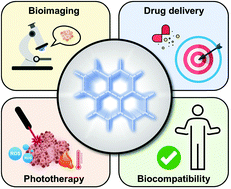Nanoscale porous organic polymers for drug delivery and advanced cancer theranostics
Abstract
Finding a personalized nano theranostics solution, a nanomedicine for cancer diagnosis and therapy, is among the top challenges of current medicinal science. Porous organic polymers (POPs) are permanent porous organic materials prepared by linking relatively rigid multidimensional organic building blocks. POP nanoparticles have a remarkable advantage for cancer theranostics owing to their specific physicochemical characteristics such as high surface area, convincing pore size engineering, stimuli-responsive degradability, negligible toxicity, open covalent post-synthesis modification possibilities etc. POPs have crystalline and non-crystalline characteristics; crystalline POPs are popularly known as covalent organic frameworks (COFs), and have shown potential application across research areas in science. The early research and development on theranostics applications of nanoscale POPs has shown tremendous future potential for clinical translation. This tutorial review highlights the recently developed promising applications of nPOPs in drug loading, targeted delivery, endogenous and exogenous stimuli-responsive release, cancer imaging and combination therapy, regardless of their crystalline and poorly crystalline properties. The review will provide a platform for the future development and clinical translation of nPOPs by solving fundamental challenges of cancer nanomedicines in drug loading efficiency, size-optimization, biocompatibility, dispersibility and cell uptake ability.

- This article is part of the themed collection: Future Applications and Techniques using Porous Organic Polymers


 Please wait while we load your content...
Please wait while we load your content...